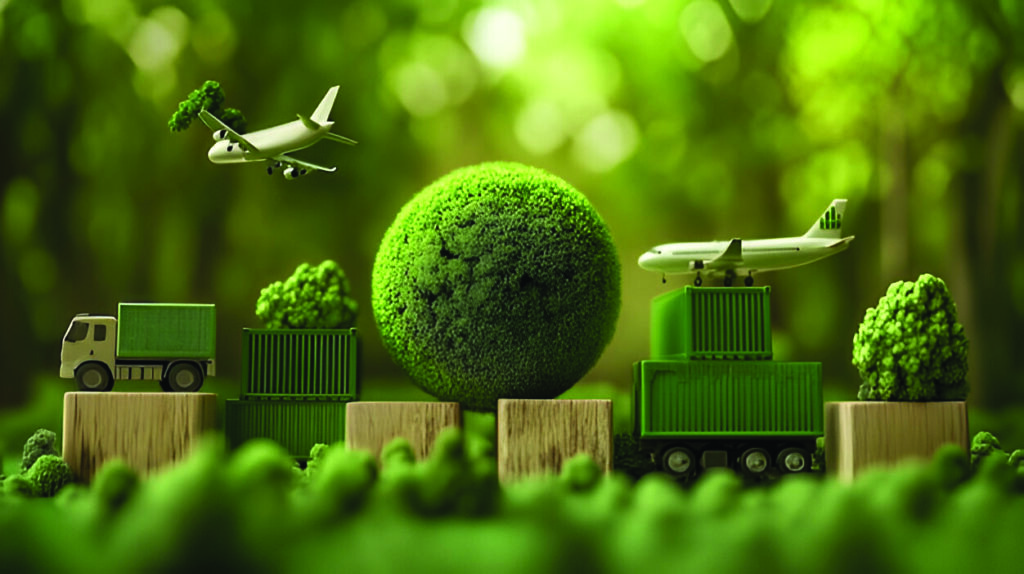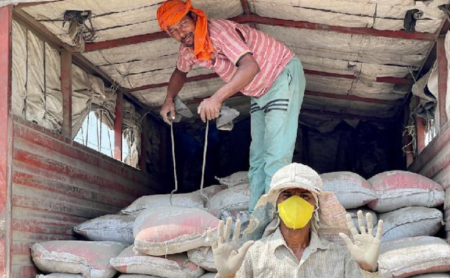As India accelerates its journey towards a low-carbon economy, one of the country’s most critical sectors, logistics, is undergoing a quiet but powerful transformation. Accounting for nearly 14 percent of India’s GDP and a significant chunk of transport-related emissions, the logistics sector finds itself at a pivotal moment. Rising fuel costs, tighter emission norms, and growing consumer consciousness around sustainability are prompting fleet operators to rethink their approach. At the heart of this shift lies a promising solution: fuel optimisation. It’s not just about saving a few litres of diesel. Fuel optimisation today is fast becoming the cornerstone of cost efficiency, regulatory compliance, and climate responsibility in the logistics value chai

Fuel efficiency is now a business and climate imperative

Freight’s fuel challenge
India’s road freight network, particularly the heavy commercial vehicle segment, is heavily diesel-dependent. According to a report by NITI Aayog and RMI (2023), trucks account for more than 20 percent of diesel consumption, despite making up only 2 percent of the total vehicle population. This disproportionate fuel usage makes freight operations both costly and environmentally taxing.
With fuel accounting for up to 50 percent of a fleet’s operating cost, even minor improvements in efficiency can translate into significant savings. Moreover, regulatory pushes such as BS-VI emission standards and E20 ethanol blending mandates are nudging logistics companies toward cleaner alternatives. But beyond policy and price, there’s now a compelling business case to go green.
Next-Gen fuel strategies
Fuel optimisation isn’t a single technology or tool; it’s a holistic, multi-pronged strategy that integrates data, machines, and human behaviour. At its core, the goal is to reduce fuel usage while improving performance. Some of the most impactful levers being adopted include:
- AI-powered route optimisation: Smart routing software helps reduce idle time, avoid congestion, and select the most fuel-efficient paths.
- Telematics and real-time monitoring: GPS and IoT-based systems track vehicle location, speed, engine status, and fuel consumption in real time.
- Driver behaviour analytics: Monitoring acceleration, braking, idling, and gear usage to coach drivers toward more economical habits.
- Predictive maintenance: Using sensors to flag issues like underinflated tyres or clogged filters before they affect performance.
- Alternative fuels and hybrid vehicles: Adoption of CNG, biofuels, and hybrid drivetrains to offset diesel dependence.
When deployed in unison, these tools are already delivering remarkable outcomes.
Impact you can measure
Real-world data underscores the value of fuel optimisation. A 2023 Frost & Sullivan study revealed that Indian companies using telematics and driver coaching reported a 12 percent drop in fuel costs and a simultaneous decrease in accidents. Another report by McKinsey & Company found that AI-based routing not only reduced fuel usage by up to 15 percent but also improved on-time delivery performance by 20 percent.
Similarly, predictive maintenance systems have helped logistics firms extend vehicle lifespans by nearly 20 percent and boost fuel economy by 8 percent. These numbers aren’t just encouraging—they’re essential in a sector battling tight margins and volatile fuel pricing.
India’s telematics revolution
Fuel optimisation is also riding the wave of digital innovation. The Indian commercial vehicle telematics market, currently growing at a CAGR of over 14 percent, is expected to touch $2.2 billion by 2027 (MarketsandMarkets). Many OEMs are now pre-integrating telematics into their vehicles, offering fleet operators actionable insights—from fuel consumption patterns to harsh driving events.
A 2024 study by Geotab highlighted that fleets combining telematics with driver training saw a 30 percent drop in aggressive driving behaviours like harsh braking and sharp acceleration—both of which are notorious for draining fuel.
Training the human element
Often overlooked but deeply impactful is the role of the driver. Several fleet operators in India are now deploying driver performance scorecards and running regular training programmes. Simple behavioural shifts, like smoother acceleration, reduced idling, and proper gear usage, have helped companies shave off as much as 7 percent in fuel consumption, as seen in data from FY23.
Regulatory push & Consumer pull
Fuel optimisation isn’t just a cost-saving tool—it’s fast becoming a necessity in a world where both governments and consumers demand cleaner supply chains. In India, BS-VI norms are already aligning with global standards, while the European Union’s Fit for 55 package signals a tightening grip on emissions.
At the same time, public sentiment is changing. According to a 2024 Deloitte survey, 71 percent of Indian consumers prefer brands that demonstrate environmental responsibility. Logistics firms serving these brands are under pressure to not only deliver quickly and cheaply—but also sustainably.
Challenges on the ground
Despite the momentum, the road to full-scale fuel optimisation isn’t without its bumps. High upfront costs, legacy fleet constraints, and limited digital infrastructure can be barriers, especially for smaller logistics players in Tier-II and Tier-III cities. Moreover, training drivers and ground staff to adapt to data-driven systems requires time, patience, and resources.
Yet, digital platforms are steadily democratising access. And as ESG frameworks and green finance incentives gain traction, companies that invest in fuel-efficient operations stand to reap both reputational and financial rewards.
The way forward
Fuel optimisation has evolved from a “nice to have” into a strategic imperative. It helps logistics firms navigate rising fuel costs, comply with emissions regulations, and meet customer expectations—all while reducing their carbon footprint.
More importantly, it offers a rare win-win: a way to protect both profits and the planet. As India’s logistics industry grows and modernises, fuel efficiency will define its competitiveness, resilience, and relevance in a rapidly decarbonising world.











